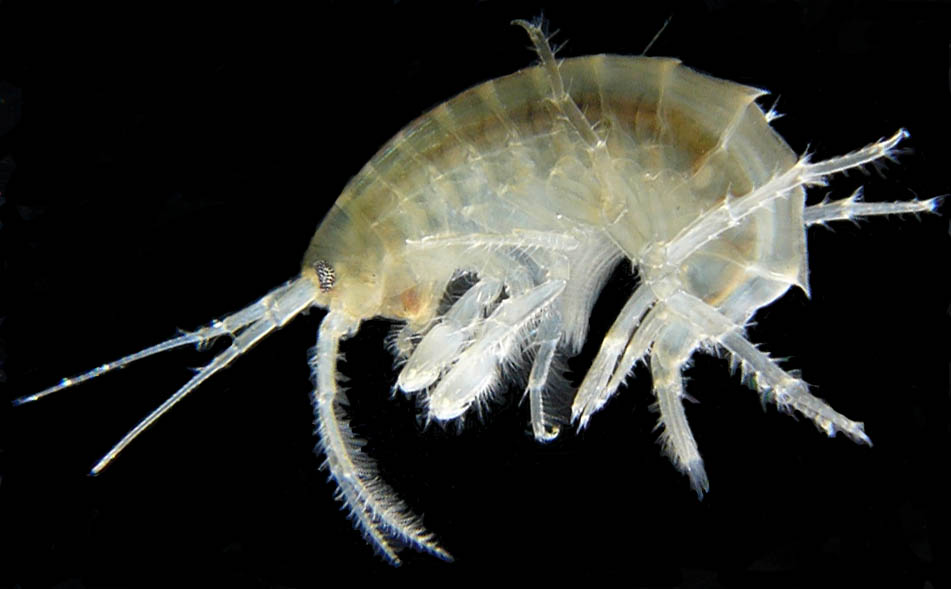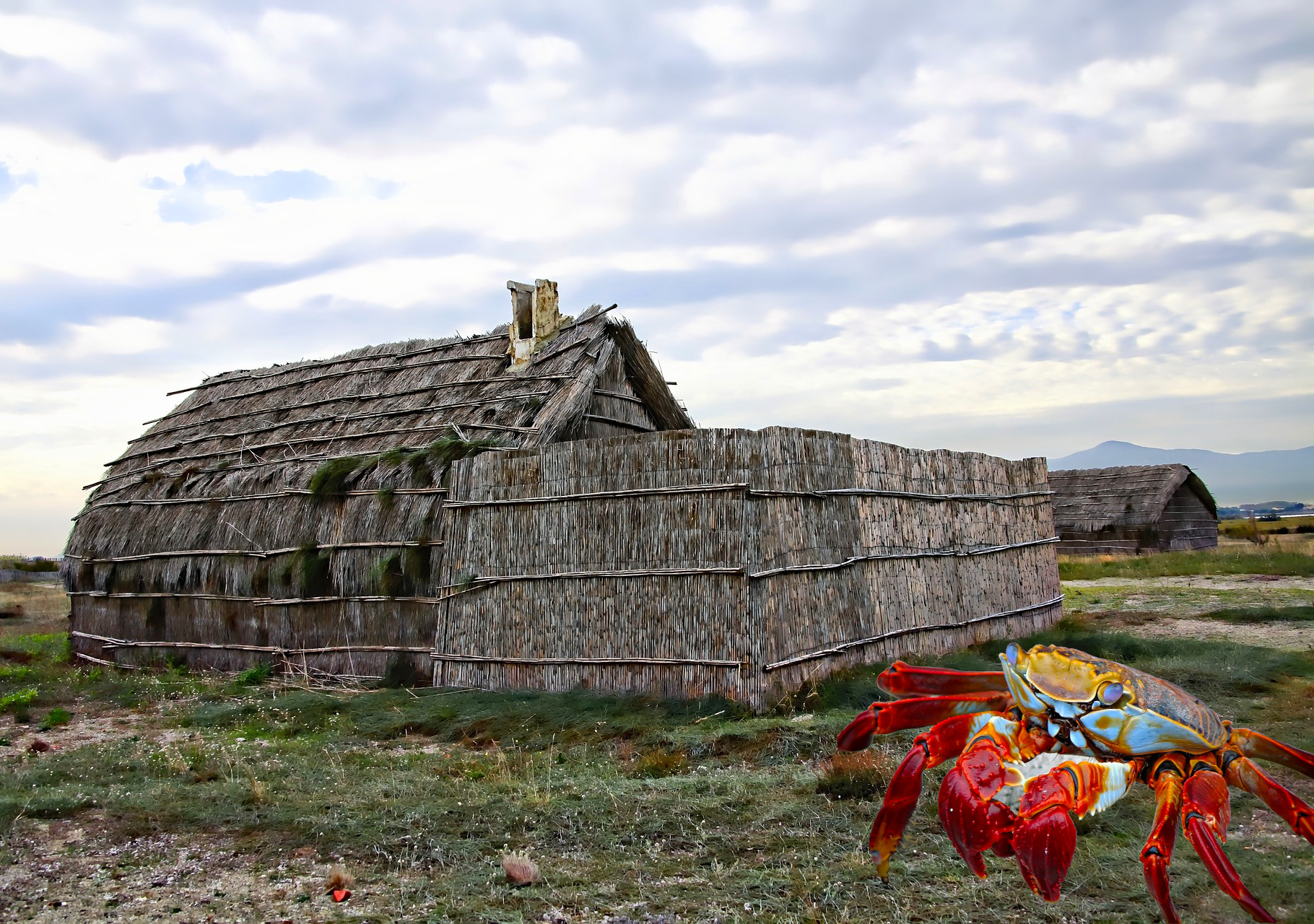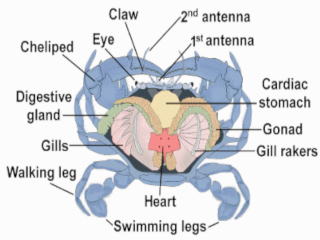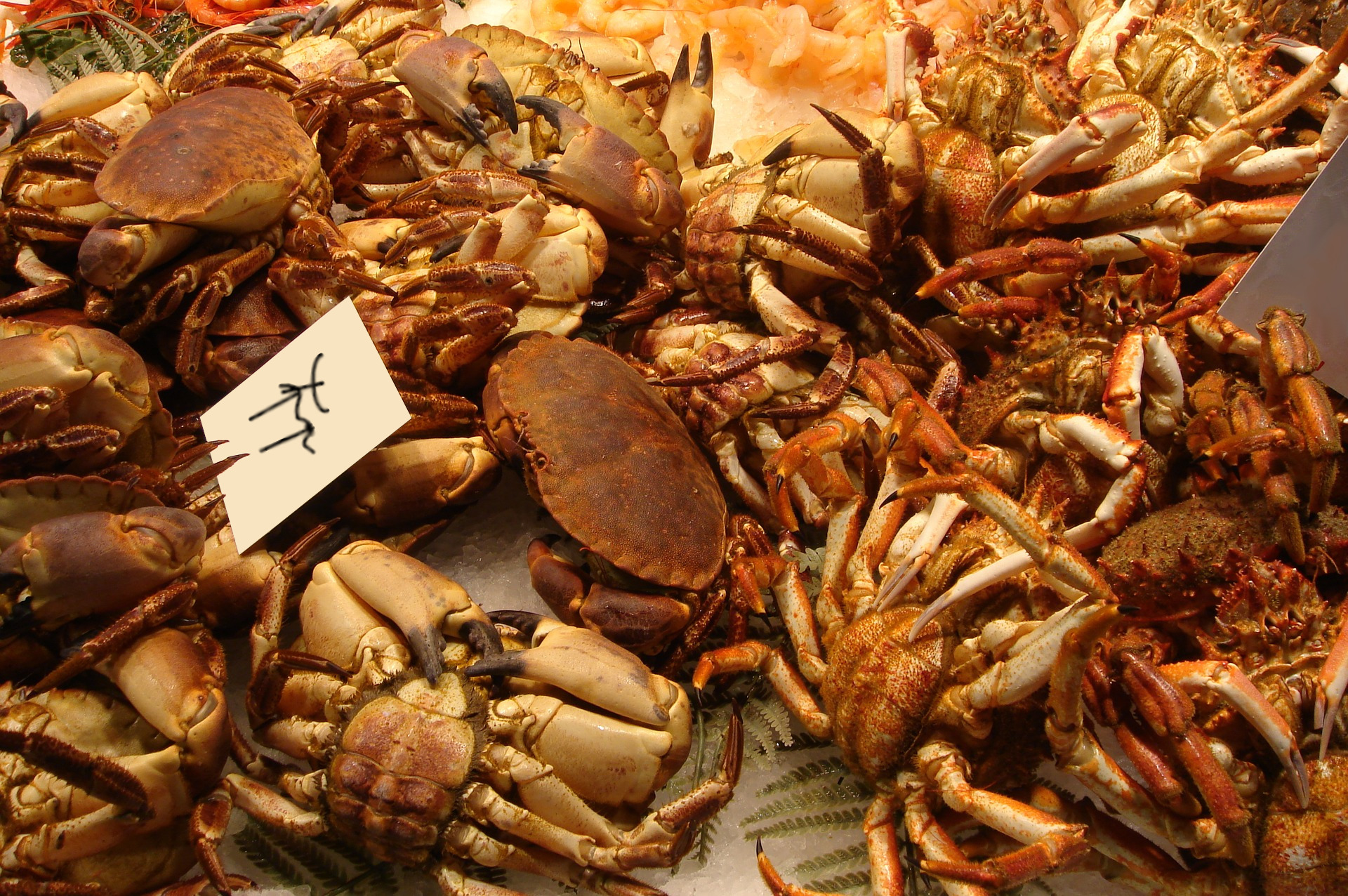Rainbow Crab
On the south-oriental shores of Ulim lake, it is very common to see those large crustacean moving over the wet rocks.
Basic Information
Anatomy
The Rainbow Crab is a decapode presenting four pair of segmented legs, used for locomotion, and one pair of chelae, large pincers use for manipulation of objects, fighting and to grab food. Their body is covered by a robust exoskeleton that grows during their life adapting to their size. This crabs are present in different size according to social role and hormonal levels, the largest of them all is the queen and the ancillae, followed by the fighters crabs and, lastly, the worker crabs. The smaller worker crabs, are indviduals of both genders that are out from the reproductive rituals, can get a carapace wide up to forty centimeters that grow of about four centimeters every year until the tenth year of age. The fighter crabs are sensibly bigger, growing faster and longer than the worker group, they have larger pincers and their carapace grows of about ten centimeters per year and their growth is continuous for the duration of life. The queen and ancillae, are female in reproduction (specifically the ancillae are the reserve of the queen in a colony) and are the largest of all the colony, with small and short pincers their carapace grows up to fifteen centimeters per year for the whole duration of their lives.
Genetics and Reproduction

As above mentioned, the reproductive ritual affects massively the social hierarchy and physical aspect of the Rainbow Crabs. The society of the Rainbow crab is complex and fascinating and at the apex of it there's the queen, that decides who's worthy to remain in the reproductive activity. To be able to produce hormones rainbow crabs have to feed a microscopic shrimp Leucothoe alba that lives mutually with the queen, been attracted by one of her pheromones. The individuals that don't feed on this zooplankton cannot produce hormones becoming worker crabs, that have the task to provide the food for the colony. Since the colours of the carapace is affected by sexual hormones they have a regular red-yellow carapace, while the sexually active crabs present the typical coloration associated with the species name. When the queen is ready to mate produces a different type of pheromone that attracts the males in the surroundings, since fighters crabs are very aggressive and intrepid only the strongest can mate and mortal fights aren't unusual. Cannibalism is a normal occuring in the species therefore if a fighter crab dies while fighting to mate is usually eaten by members of the colony and, even the one who is allowed to mate may end over getting eaten by the queen. Ancillae generally constitute a reserve for the queen, in case of sudden death by predator or illness, although they can decide to spawn a new colony, usually at significant distance to avoid territorial conflicts.
Dietary Needs and Habits
Rainbow crabs have a very adaptable diet and, besides the already mentioned need of eating L. alba shrimps to be able to reproduce, they can eat adapt to eat phytoplankton if nothing else is available. Usually they feed on fishs, eggs and small birds, it doesn't matter if dead or alive. Fighter crabs, that patrol to protect worker crabs, catch sometimes preys that can then be carried to the den by the second ones. They would engage in a fight with something larger than them only if unable to escape, in those cases they will fight to the death or, if in a difficult fight, until an opening to escape route is available. In the recent times, the increased human activity around the lake has increased the risk for worker crabs, therefore is more common to see fighter crabs patrolling the foraging areas, this event is at the base of the assumption that the Ulim Lake's crabs are larger than the ones in the ocean.
Additional Information
Uses, Products & Exploitation
The meat of the crabs is highly proteic, therefore the hintadu people consider them a suitable dietary complement and hunt the worker crabs when those aren't protected. The fighter crabs are too dangerous to be worth hunting them. Other populations have shown interest for this type of food, but the difficulties in preserving them for long travels affects the commercial interest at the moment. The carapace of the fighter crabs, especially the largest ones, if treated appropriately can be used for the production of lightweight cuirasses.
Geographic Origin and Distribution
This large decapode can be observed commonly on the wet rocks on the oriental and meridional shores of the Ulim Lake and on the sandy beaches and rocks of the of the Eastern Ocean. Although the members of the two populations are exactly identical, the common perception is that the population of the lake is larger and that is due to human presence that requires the larger fighter crabs to protect the smaller worker crabs. The original population is the one that can be found in the ocean, the ones of Ulim Lake are a segregated population that has adapted to this enviroment but there's no significant functional or social variation between the two populations.
Perception and Sensory Capabilities
The sight of the rainbow crab is provided by pedicled eyes that can turn of more than 270ogranting them a very wide range of vision and the possibility of observing in two separate direction at the same time. The sense of hearing is less effective than the sight and provided by two areas with specific nervous terminations that are covered by a softer membrane in a fold between two articulated sections of the carapace. The tactile messages are trasmitted by pressoreceptors distributed in the articulation and by hair, that grows along the anterior set of motility legs, which follicles are interconnected with nervous fibers. This hair is especially effective in detecting the variation of current inside the water and consent them to orientate even in murky water with very poor visibility.





Crabs! I love that the society of crabs is kind of like bees, and I love that there are shrimps that live alongside the queen crab. Really fascinating article. :)
Thank you! Finally I can see the comments again!!!